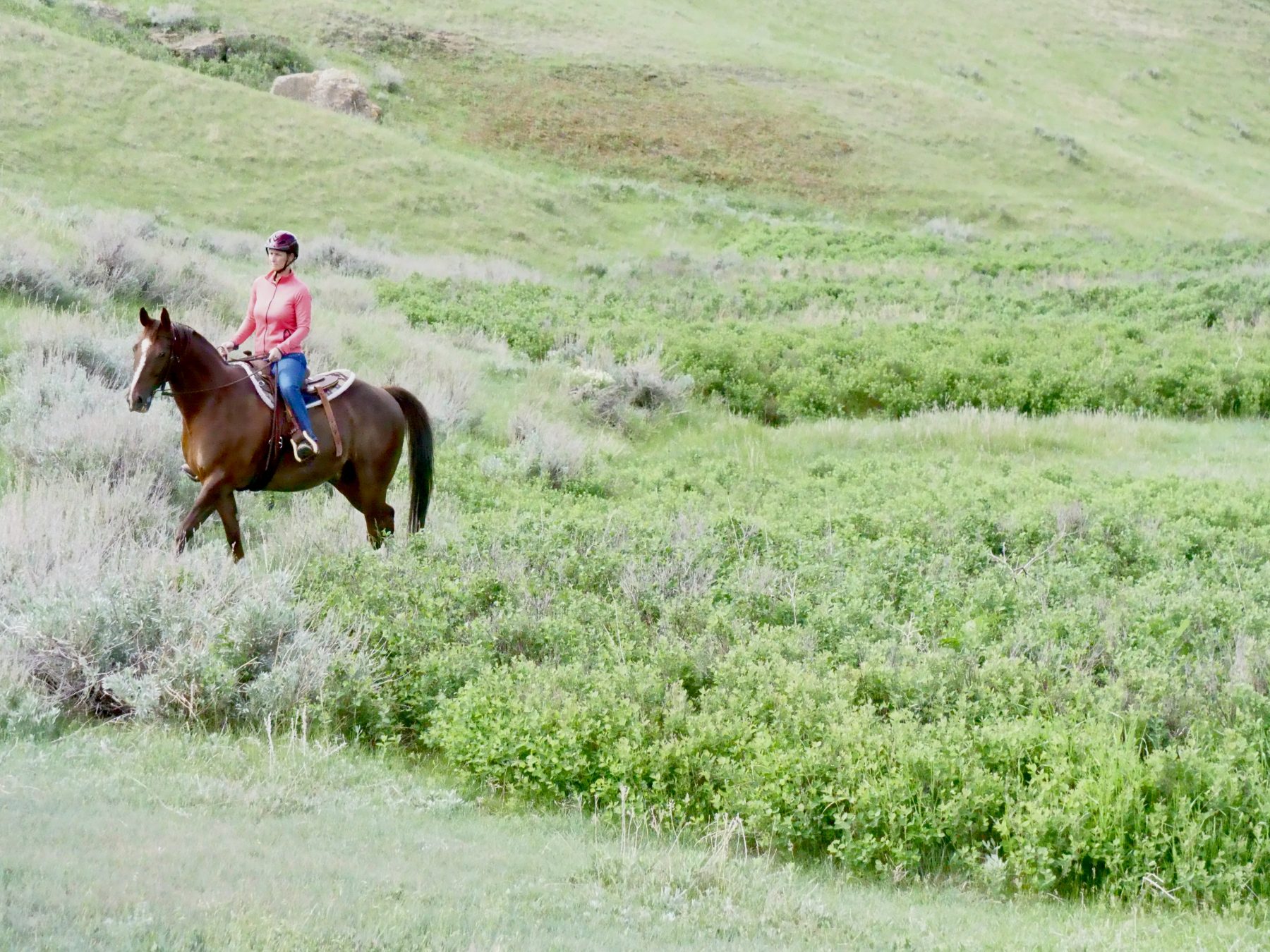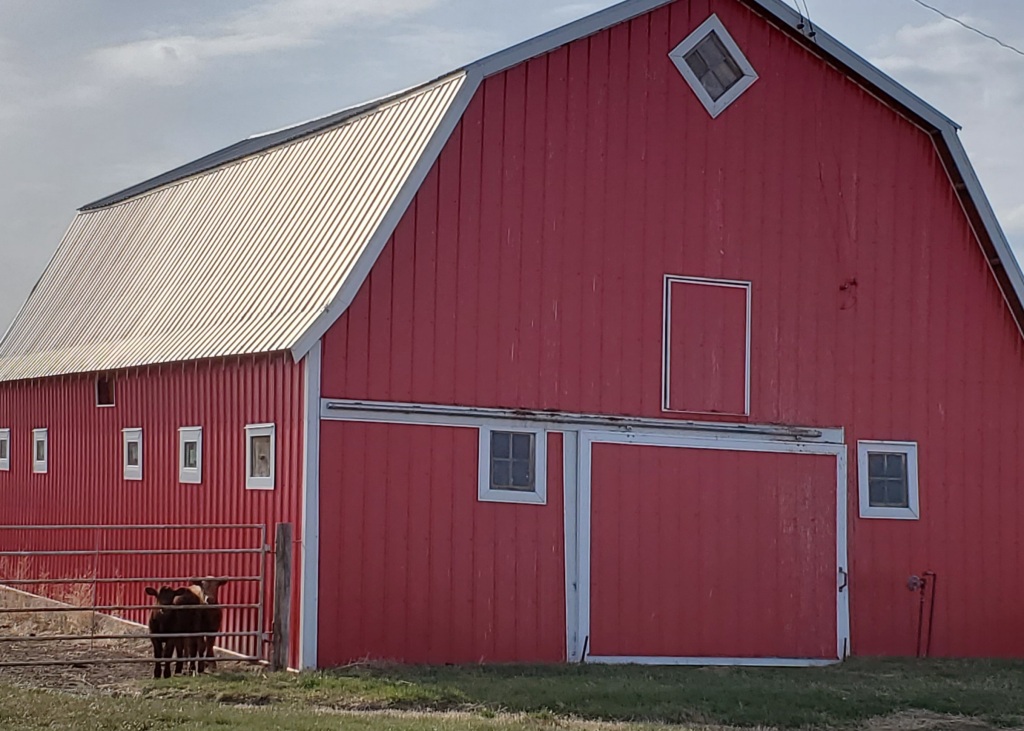
To view the video of Carol’s story: https://mhcowboylife.com/stories-from-seniors/

Carol Eisenbarth is a member of the Board of the Medicine Hat Cowboy Poetry Foundation, our treasurer. She is retired from a career in bookkeeping and ranching in the Schuler area, with her husband, Bob. Photos accompanying this article are from Carol’s private archives , (unless otherwise indicated) and have been used with her permission.
Caroline Eisenbarth (nee Becker) loved this barn when she moved on that yard with her dad and mom (Adam and Annie). It was 1945 or 46 when she was yet a preschooler. Her grandpa, Henry Becker built it onsite using the typical cooperative community way, a barn-raising. That was when her dad, Adam was growing up. He was born in 1919.


It had a big door to the south and Carol remembers a walk-in door facing the house on the north side. “That was the door we mostly used to get to the chop bin on the left. The farrowing pig-pen was across from it on the right side. A section of the barn had some stalls for the cows and another portion was horse stalls.”
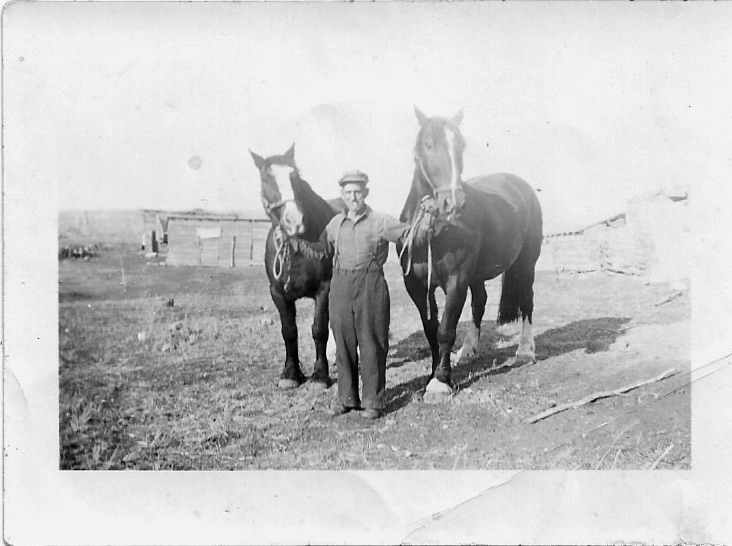
She remembers Sandy, their old chore horse, (the one on the right) being tame and big and having a back so broad it seemed you’d nearly be doing the splits to ride him. “That horse knew the barn manuring routine. Sandy was hitched to the stone-boat where Dad forked the manure onto the stone-boat, then got on her back, no saddle, no reins, just a ‘cluck,cluck’ and old Sandy went to the manure pile and stopped. When Dad had unloaded, he either mounted her again or rode the empty stone-boat back and Sandy knew exactly where to reload. It was a job I remember helping with. I’m glad there were wooden floorboards making it an easier job.”
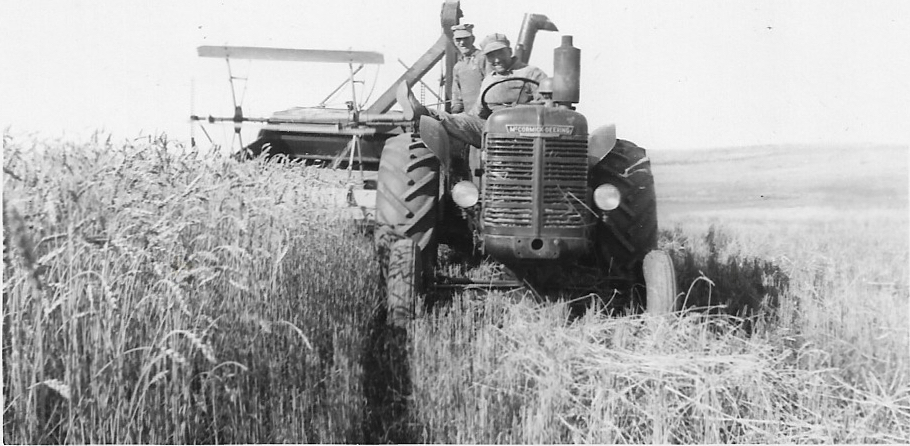
Carol remembers the ‘painting parties‘ when neighbours came to help get a protective coat on the barn. She was just a little tyke and loved climbing up the ladders. But for coming down she needed help. Her dad was also afraid of heights but an uncle was there to rescue her.

When Albert Roth bought the ‘Becker Place’ in 1967, he decided to move the barn to its present location. Albert’s son, Les (a young teenager at the time) remembers it being summer and they had to get it across a spring-bottom creek. May Will’s Creek had a bit of a bridge for cars to cross, but the barn was way too big for the bridge, even too big for the road. Neighbours were sure the barn would stay in the creek, stuck forever. And to increase their doubts, the local mover by the name of McCaig had a medical condition that looked like he couldn’t take care of himself, much less move a barn. It was big (28′ x 48′) and it was heavy, double-boarded on the outside (shiplap and over it drop-siding), built with fir lumber (that lumber is hard to come by now-a-days). But McCaig had the truck, the jacks, the know-how and good men working for him. They braced the barn, placed beams to cross May Will’s Creek and got it safely to where it stands today.

By then the barn-boards were in dire need of a paint job, no easy feat and you certainly couldn’t be afraid of heights. To climb up, old wooden ladders (probably some borrowed) were anchored on the bed of the 3-ton truck parked alongside the barn. Ropes were slung around the structure to support the workers who spray-painted the roof first, a beautiful jet black. Les’ sister, Darlene remembers the capula, the small square structure that was perched on the peak of the roof. “It needed to be painted too (a bright red) so guess who got that job. I was so scared!”
One of the barn’s first functions was to host the Schuler 4-H Beef Achievement Day of which Cindy, Les’s younger sister was a member at the time. Over the years it has served the Roth’s well. The huge loft was the perfect place to store hay, that is until the floor joists started creaking. The beams were reinforced and to this day lighter straw bales are stacked up there, The back part of the barn has almost always been used as a calving pen and for cattle during a snowstorm.
At first the barn served as a granary for wheat. It was where Les remembers digging cured hams into the wheat that served as a refrigerator, then digging around in the wheat to find them again. Albert used it to store the big truck until he hooked the door once too often; in fact he had only inches on each side to clear it! Part of it still stores the little tractor, the salt and some lumber. Until a few years ago it was still where they kept the barley chop (the oats chop bin was in the other barn). The back portion is used every year during calving time.
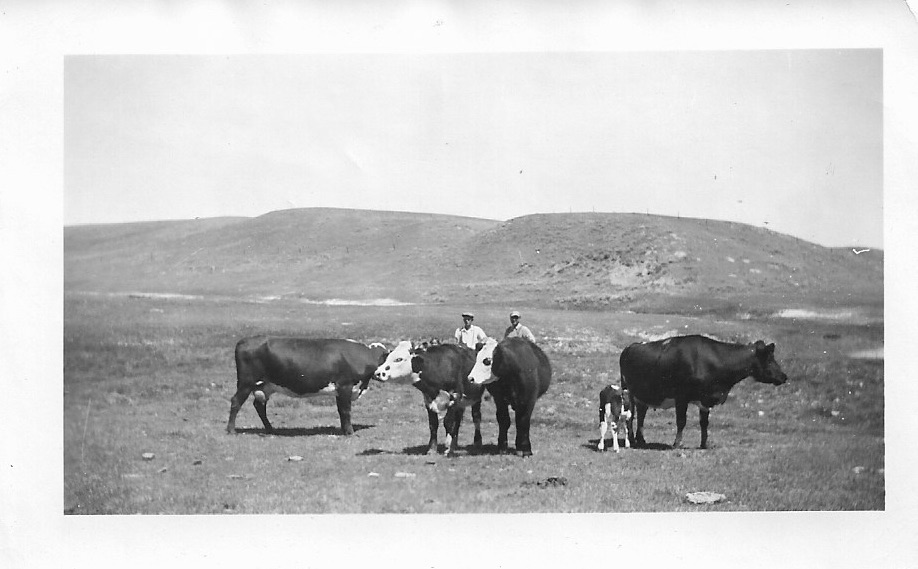
If you don’t protect a building, it won’t last, and so it was that the shingled roof and siding were painted, later scraped and painted again, and that repeated several times. The roof and sides have since been metal-clad. When the windows were changed, Les and his son Geoff discovered how much stronger fir wood is than the spruce that’s mostly used now. It was hard to saw and it seemed pre-drilling a hole to put in a nail was the best way. The cement didn’t have SR (salt resistant) additive so it’s not as good as it used to be. But thanks to its sturdy construction and upkeep, it still serves them well. It will be up to the next generation, Geoff, his wife Amanda and their boys Hunter and Archer to be ‘barn-keepers’. written by Jen Zollner

Thanks to the Roths for permission to photograph the barn. Thanks to Carol and Cheryl for the pictures.
